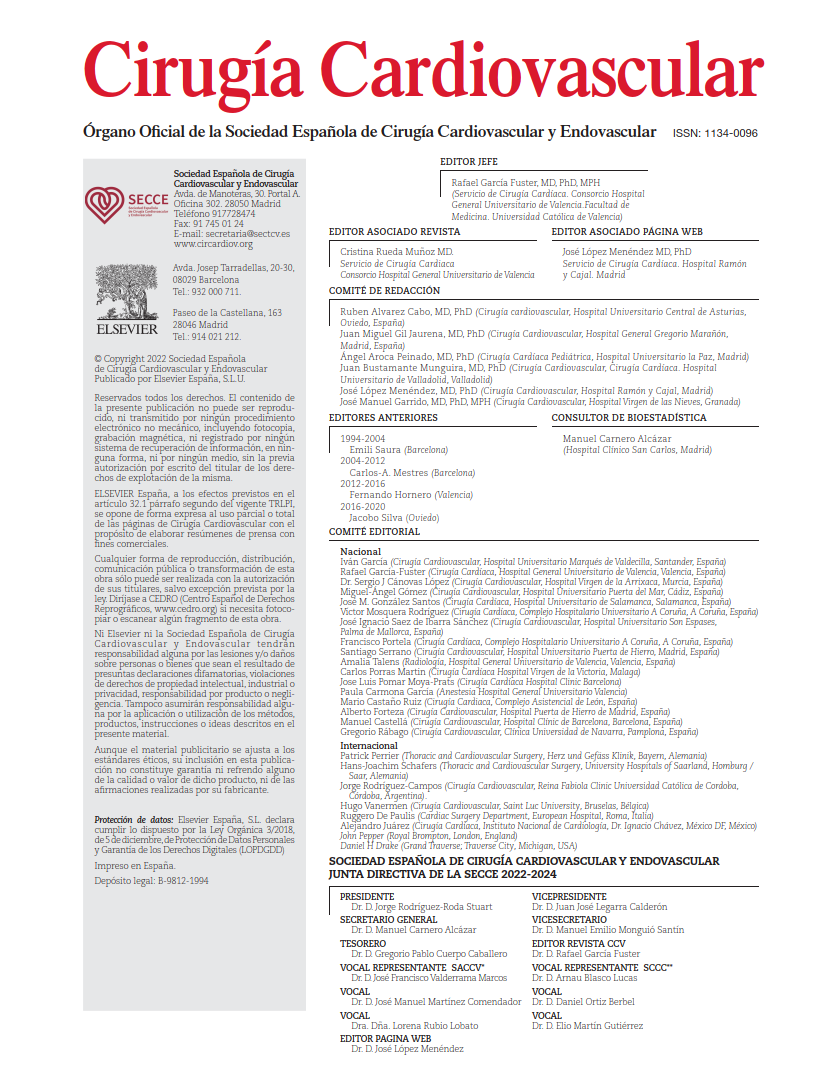
HeartMate 3 in Patients with Extracorporeal Life Support: Improved Outcomes over Previous Devices and Comparable to Transplantation?
Three-Year Results of the ECSL Registry in Extracorporeal Life Support Patients Receiving HM3 Implants from January 2016 to April 2022 Across 14 Centers, Compared to Other Long-Term Devices.
Is Right Axillary Artery Cannulation Safe in Dissected Right Axillary Arteries in Acute Type A Aortic Dissections?
Observational, single-center, retrospective study analyzing the safety, in terms of hospital mortality and stroke, of cannulation over a dissected right axillary artery.
The Ebstein anomaly and the difficulty in drawing conclusions for decision-making
Results from the experience of six centers in Australia and New Zealand in the management of Ebstein anomaly over 34 years.
On-X® Aortic Prosthesis Carriers in Aortic Position: Is This the End of Anticoagulation Demonization?
This study confirms the findings of the PROACT trial on the safety profile of reducing oral anticoagulation in patients with an On-X® prosthetic valve in the aortic position.
What Happens with the Truncal Neoaorta?
A single-center, retrospective study from Boston Children’s Hospital reports 35 years of experience with truncal root dilatation.
Valve-Sparing Aortic Root Replacement with Reimplantation vs. Remodeling: A Meta-analysis
This meta-analysis compares reimplantation and remodeling techniques for valve-sparing aortic root replacement (VSARR) in patients with a dilated aortic root. It includes data from comparative studies on reimplantation and remodeling techniques for VSARR published up to December 31, 2022.
New procedures for a minimally invasive era: transapical beating-heart septal myectomy for hypertrophic obstructive cardiomyopathy.
This study, conducted as a prospective, single-center (Tongji Hospital in Wuhan, China), single-arm trial by a single surgeon, is the first in humans to assess the transapical beating-heart septal myectomy (TA-BSM) procedure.
More challenging yet: outcomes of heart transplantation in children with heterotaxy syndrome
This retrospective study utilized data from the United Network for Organ Sharing (UNOS) and the Pediatric Health Information System (PHIS) to evaluate the outcomes of heart transplantation in children with heterotaxy syndrome. These were compared with outcomes in patients with other congenital heart diseases (CHD) and cardiomyopathies, focusing on survival, rejection, and additional complications.

